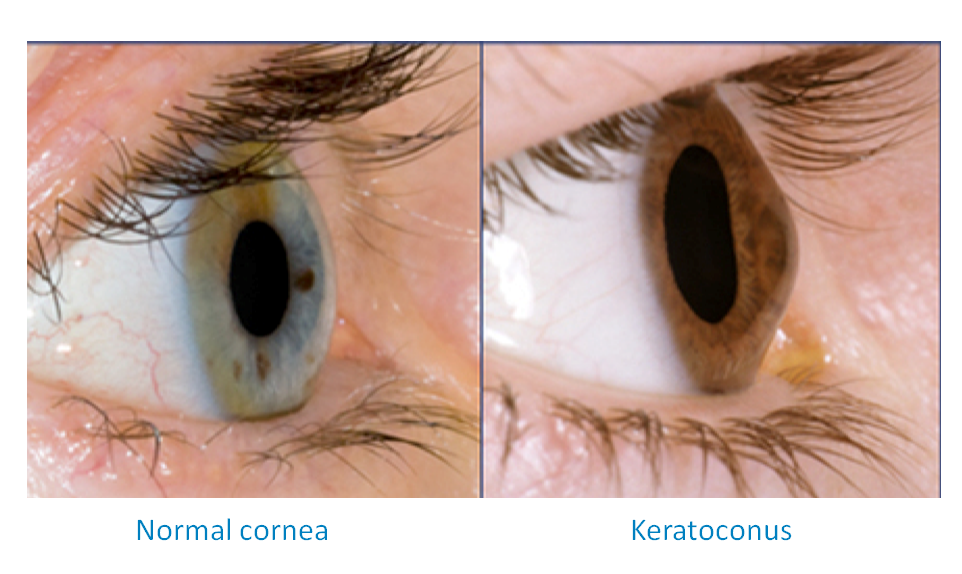INDICATIONS for CXL:
– corneal ectasia, congenital and acquired
– keratoconus
– pellucid marginal degeneration
– iatrogenic keratectasia (post-lasik, pseudophakic keratopathy following inadequate cataract surgery) with prognostic projection toward corneal transplantation. It is best when intervention is performed in beginning stages, with pachymetric value greater than 400 microns of corneal thickness.
Yet, today we have capabilities to save corneas thinner than that from corneal transplantation.
Procedure is in clinical practice since the end of the nineties of the last century.
There are no changes in values of intraocular pressure during the procedure. Fitting of the special keratoconus contact lens follows after re-epithelization and recovering of cornea process.
AIM OF THE PROCEDURE is achieving biomechanical stabilization of cornea and halting of the progression of the disease to prevent the need for transplantation. This is a therapeutic procedure in conditions of progressive thinning of the cornea (ectasia), stimulating the genesis of additional chemical bonds within corneal stroma by strictly localized photopolymerization with maximum protection for surrounding tissues.
The procedure consists of homogenous illumination of corneal tissue (UVA 370nm) saturated with riboflavin solution (vitamin B2), by which are stimulated biochemical mechanisms for strengthening and creating new covalent bonds between collagen fibrils (increase of biomechanical power).
The procedure is painless and safe. Applied corneal anaesthesia is with drops.
THE EFFECT IS LOCALIZED AT ANTERIOR PART OF CORNEA.
TWO MAJOR GOALS IN TREATING CORNEAL ECTASIA ARE:
-Restoration of structural integrity of cornea, with corneal collagen cross-linking (CCL)
-Restoration of visual acuity, which is achieved by special contact lens.
Today, we have possibilities of fitting customized special lenses for this deformed cornea. Rose K2, Soft K and scleral contact lenses which are applied after completion of cross- linking procedure.
There is a possibility of application of refractive procedures, based on assessment of eye condition:
Laser or implantation of intraocular lens.
Combining these two methods of treatment and by correction of special lens for ectatic cornea, we are managing fantastic results in treatment, with complete rehabilitation of visual function, which explains the video story at the bottom of the page.
WHAT WAS OBSERVED AFTER CORNEAL CROSS LINKING APPLICATION?
-
Cessation of progression of ectasia
-
Decrease of regression
-
Improvement of contact lens tolerance
-
Fall of the maximal keratometric value
-
Slight flattening of cornea up to 2D astigmatism
-
Slight improvement of uncorrected visual acuity
